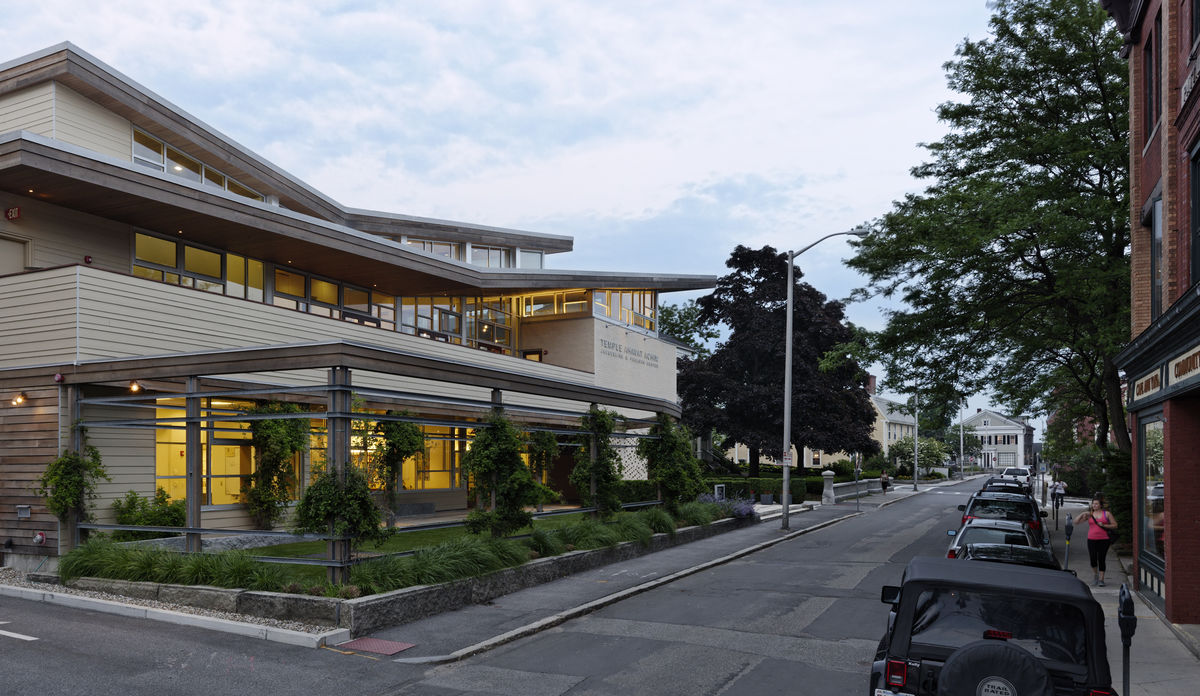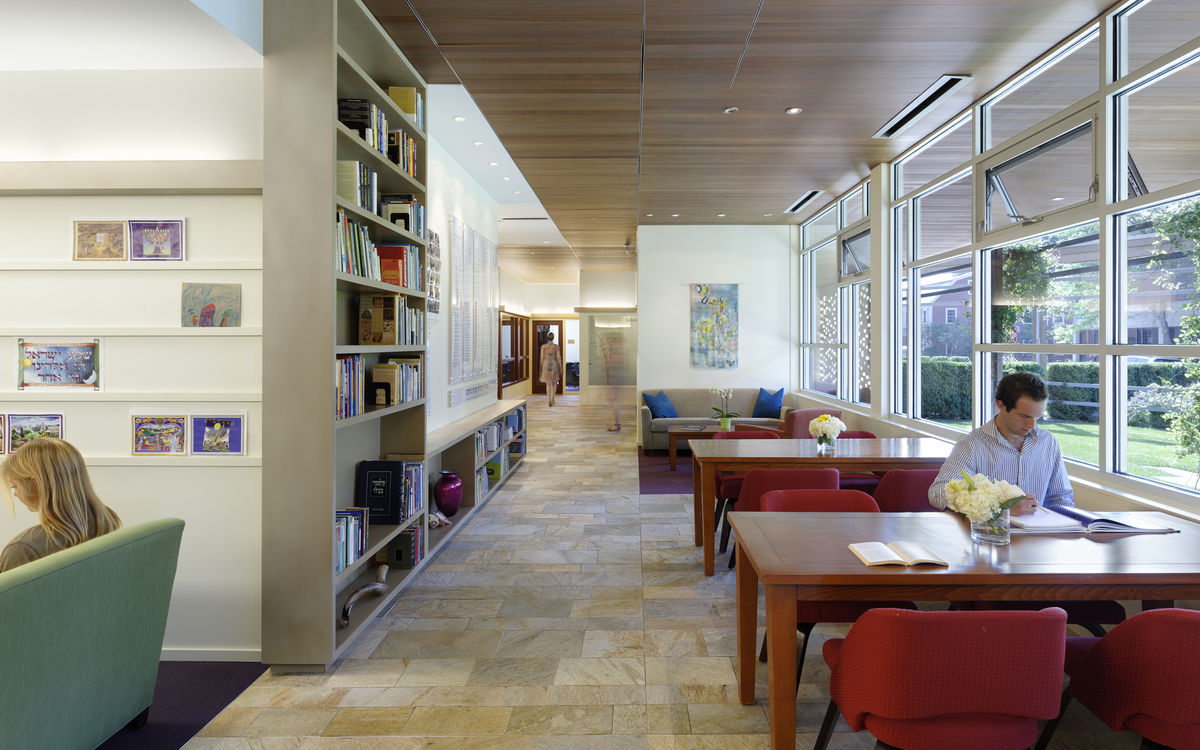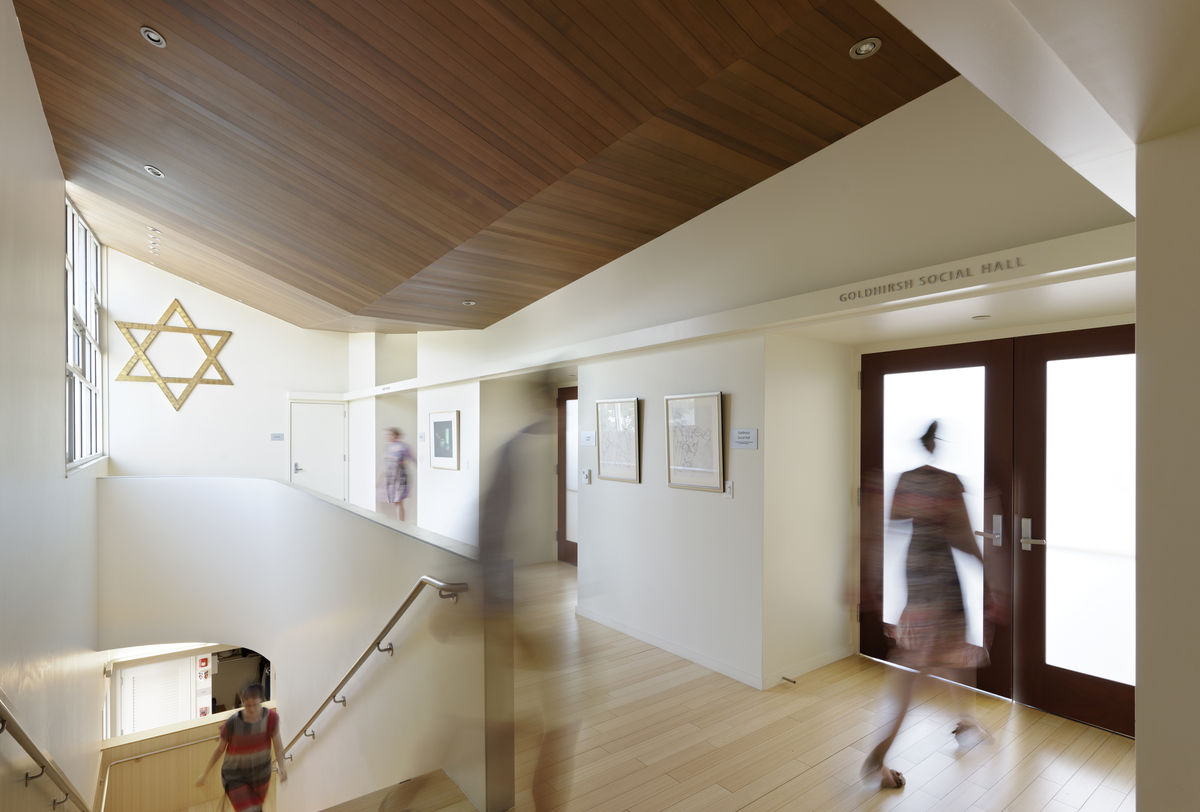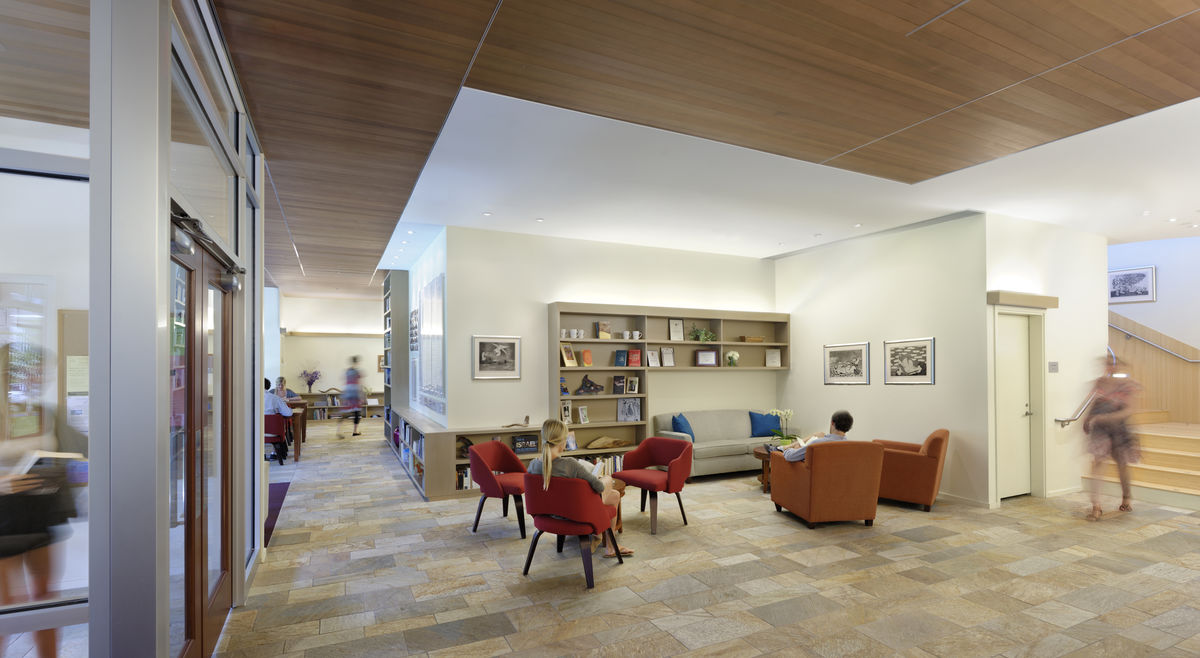Photography by - Chuck Choi








The Temple Ahavat Achim’s former building, tragically destroyed by fire, had been built originally as a church. Its north-facing sanctuary, large enough to hold the great influx of worshipers on High Holy Days, was lacking in intimacy for the much smaller weekly gatherings, making it a rarely utilized space that was expensive to heat and cool. MTA was asked to address these challenges and to create a spiritual building that was also open to the community of Gloucester.
A new programmatic strategy reduces the overall footprint, while also creating meaningful relationships with the city and re-orienting the worship spaces toward Jerusalem in the east. The length of the building is oriented to the south to take advantage of passive solar heating in the winter. Deep overhangs prevent solar heat gain in the summer months while allowing for year-round day-lighting. The southern expanse of glass along Middle Street creates a welcoming relationship between the social spaces on the ground floor and the city.
The building guides the user from the street to the interior sacred spaces through an unfolding spatial sequence activated by natural light. The brick that holds the space of the sanctuary on the second floor descends to the terrace at the street as a delicate screen, creating a thickened entry threshold. Passing though monumental doors, salvaged from the previous temple, one enters a space dappled with light between the brick screen wall and the building. Moving toward the entry, one emerges from behind the wall and returns to the space of a trellised garden that links the building to the street. Once inside, light spilling from above reveals the stair to the sanctuary, beyond the “schmoozatorium”, or social gathering space, which faces the garden. Reaching the sanctuary, the curved bamboo and glass eastern wall creates a more enveloped and introspective feeling. The spiraling movement of the roof upward and to the east parallels the journey from the street to the sacred space of the sanctuary and focuses the view upward to the sky.
